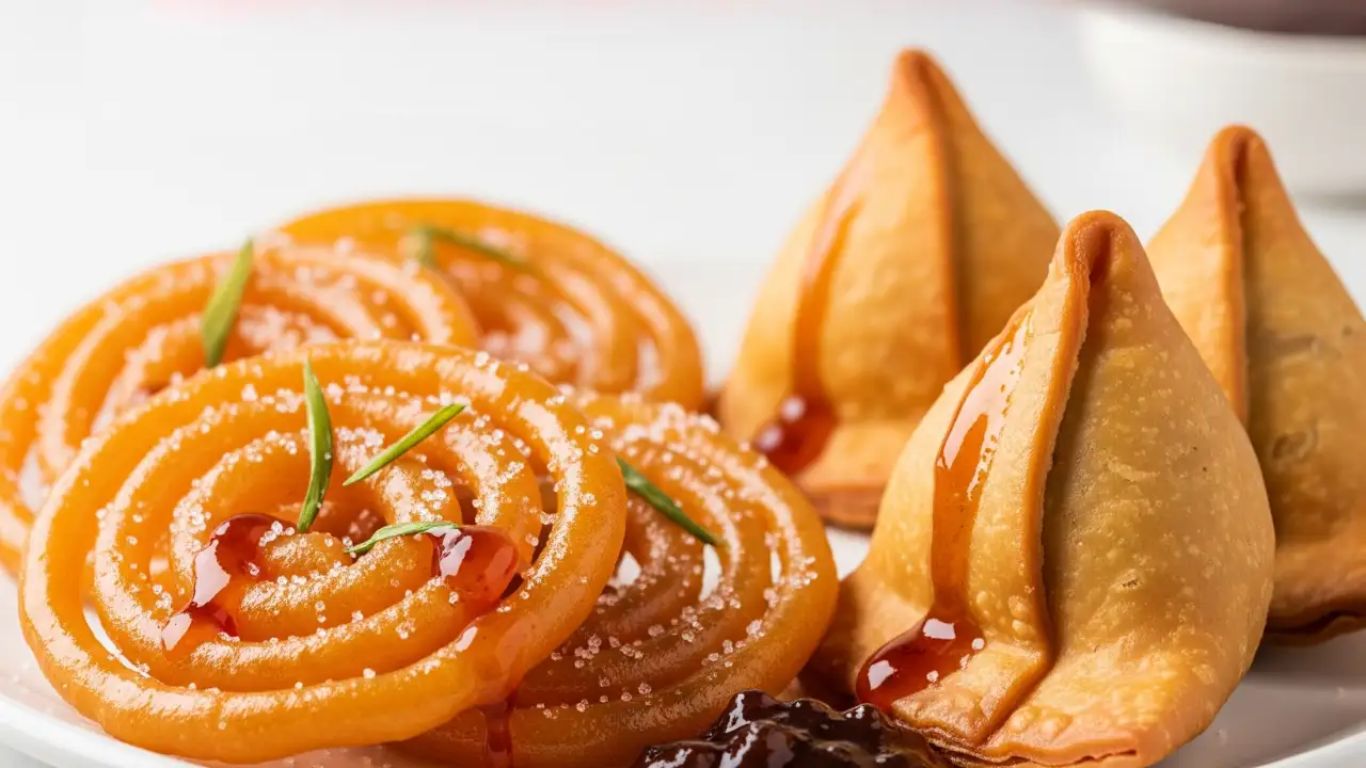Eating Samosa Causes Health Issues Prompts Nationwide Office Awareness Drive
Eating samosa causes health issues not just a warning, but now a structured awareness initiative from the Ministry of Health and Family Welfare. In an unprecedented step, the ministry has directed all Central and State government offices to install “Sugar and Fat Boards” in visible areas. These display boards will showcase the fat and sugar content in common Indian snacks sold on office premises, such as samosas, jalebis, laddoos, and vada pavs. The goal is to give both employees and visitors an immediate and clear idea of how these beloved treats impact their health.
Backed by the Indian Council of Medical Research–National Institute of Nutrition (ICMR–NIN), this move isn’t just about calorie counting. It’s a behavioural nudge, aiming to promote more informed food choices without imposing bans. It’s a reminder that while taste is essential, so is long-term wellness.
Why Eating Samosa Causes Health Issues According to Nutrition Experts
Eating samosa causes health issues- This campaign will initially launch at AIIMS Nagpur and is expected to gradually expand across major government institutions. Inspired by the success of pictorial warnings on tobacco products, these sugar and fat content displays work as visual nudges. Their aim is to reduce the consumption of snacks high in unhealthy fats, sugars, and salts.

With rising obesity levels in India nearly 24% of men and 23% of women were found obese according to the 2019-21 NFHS data there is growing urgency to address everyday food habits. The sugar and fat content of Indian street snacks is often hidden beneath deep-fried layers or sweet syrup coatings. This makes real-time awareness crucial.
What the Data Reveals About Your Favourite Snacks
Here’s a quick look at some shocking numbers based on FSSAI guidelines:
- One samosa (100g): 362 kcal | 28g fat
- Kachori (40g): 166 kcal | 10g fat
- Vada Pav (127g): 263 kcal | 9.5g fat
- 10 Pakoras (130g): 351 kcal | 26g fat
- Banana Chips (28g): 147 kcal | 9.5g fat
- Gulab Jamun (62g): 203 kcal | 32g sugar
- 2 Jalebis: ~300 kcal | Mostly from sugar and reheated oil
These snacks are staples in office cafeterias, and without any labelling, consumers often underestimate their impact. With the new visual boards, it becomes easier to relate daily choices with long-term health outcomes.
Awareness Without Anxiety
Eating samosa causes health issues – Health experts stress that this move is about awareness, not food anxiety. It’s not meant to eliminate cultural foods like samosas or jalebis, but to encourage moderation and informed eating. Nutritionists emphasize that the source of calories matters more than just the number.
For instance, a sugary drink and a fruit might contain similar calories, but fruits provide fibre and micronutrients. Similarly, food fried in olive oil differs significantly in health impact from food fried in reheated refined oil, which can form trans fats and cause inflammation.
Looking Ahead Awareness Isn’t Enough
While this is a positive step, experts caution that visual nudges must be supported with stronger legislation. Currently, India still lacks mandatory front-of-pack labels for packaged foods. Despite the FSSAI’s amendments in 2020, upper limits for sugar, salt, and fat in food products are yet to be officially finalized. Also Read: 5 Powerful Facts About Dehydration That Will Change How You Hydrate Daily
Several studies, including a 2022 ICMR-NIN report, indicate that warning labels significantly outperform general nutrition data in discouraging unhealthy food consumption. Clear, easy-to-read nutrition indicators on packaging, along with regulations on advertising unhealthy food to children, could make these awareness initiatives truly impactful.
Conclusion:
The new government initiative may not stop people from enjoying their occasional samosa, but it’s a step in the right direction. By making fat and sugar content visible, it encourages smarter food decisions, especially in public institutions where these snacks are widely available. When it comes to health, it’s not about eliminating food culture but evolving it through knowledge and choice.

